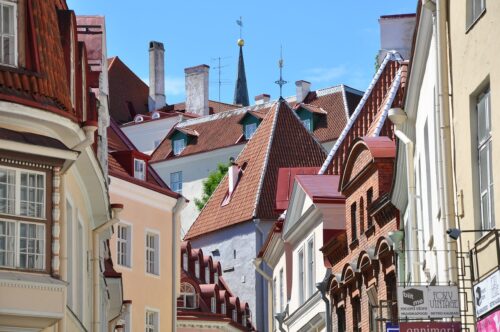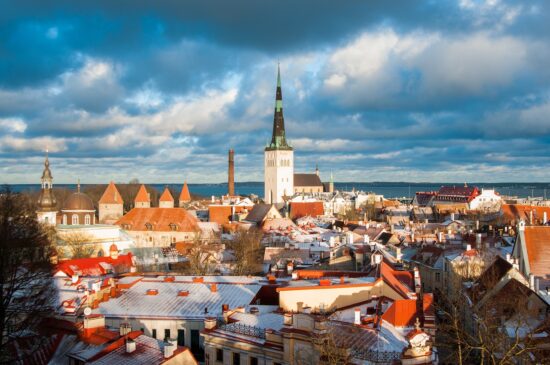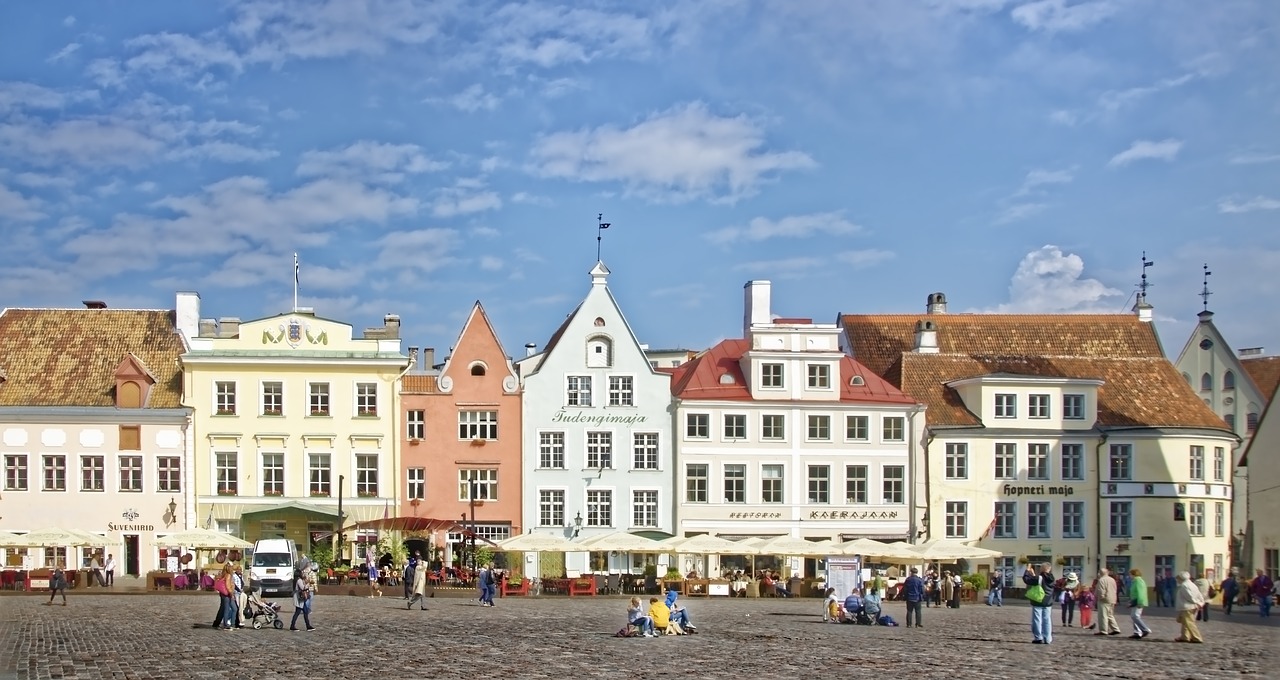Maturity
Rapid industrialisation intensified urbanisation and the number of Estonians in Tallinn increased. The first Estonian newspaper of the city was published in 1901 by Konstantin Päts, a soon to be leader of Estonian politics and in 1904 the city council acquired a series of influential Estonian members with an actual leverage, like Konstantin Päts himself, Voldemar Lender and Jaan Teemant. Voldemar Lender became the first ethnic Estonian mayor of Tallinn in 1906. The attempt to Russify Estonia was in essence producing a completely opposite reaction.
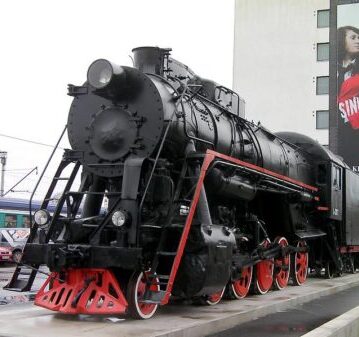

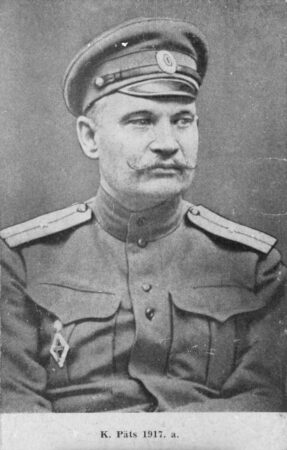
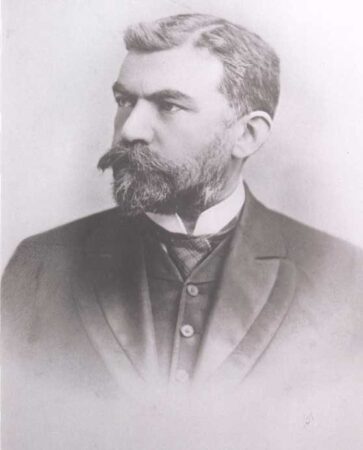
Russia’s efforts to integrate Estonia worked in the benefit of Tallinn’s economy that was booming based on the needs and demands of a vast Russian market. A series of new factories and a pair of military ship-yards were established catapulting Tallinn’s population to more than 100.000 in just a few years. A new type of housing known as Lender Houses with symmetrical facades and cheap construction costs shaped the cityscape of the new suburbs. The number of employed Estonian workers grew significantly.
The two main undercurrents in European politics, nationalism and socialism often clashed with each other. When the latter surged the first Russian revolution of 1905, the two converged in the case of Estonia with revolution directed against both the absolutist power and the Baltic German upper classes. Remnants of the feudal order, class-related Baltic German privileges, insufficient land and national oppression were the targets of the Estonian freedom movement.
The massive demonstrations in Estonia had started in May 1905 and in October the demonstrators of Tallinn counted their first victims when the army opened fire, killing 94 and wounding more than a hundred. Tsar Nicholas II was forced to grant the citizens’ rights on 17 October 1905. The first legal parties were established in Estonia and despite their nuances they all demanded democratic and civil rights with the most radical asking also for the right to national self-determination, autonomy and local government.

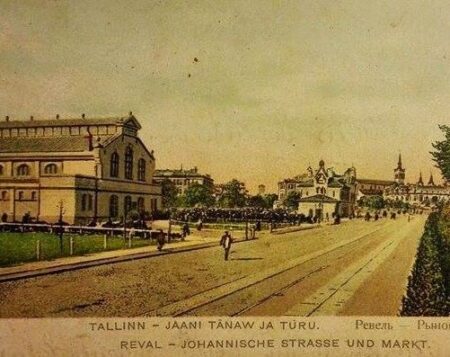
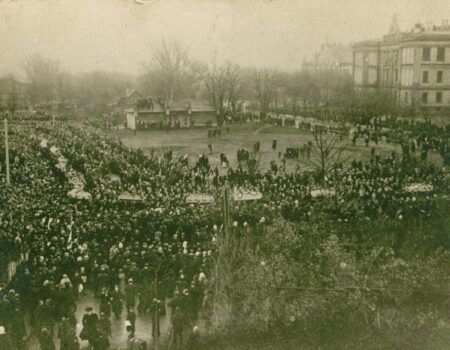
WWI forced ethnic Estonians to choose a side between the warring Germans and Russians. With the majority of the land still under the control of ethnic Germans and the fears of Germanisation and the loss of their ethnic identity being high, Estonian politicians chose the side of Russia. More than 100.000 Estonians had to join the Russian army and all aspects of the local economy were committed to the needs of the army. Two days before the October Revolution in St. Petersburg in 1917, the Estonian Bolsheviks led by Jaan Anvelt staged a successful coup and took over the control of Tallinn. The Autonomous Governorate of Estonia would only last until February, when just a day after the first Declaration of Estonian Independence (24 February 1918), the country was invaded by the Second German Empire and captured Tallinn (25 February 1918). A few months later (November 1918) the German revolution this time would again upturn things with the power handed over to the National Estonian government. In order to keep their independence however they would again have to fight, this time against the advancing Red Army.
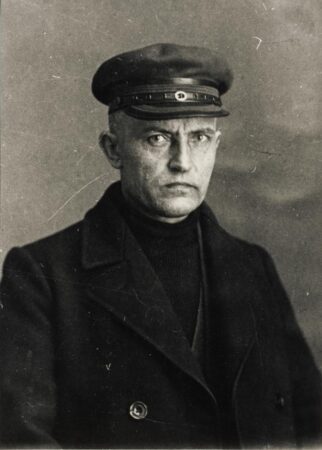

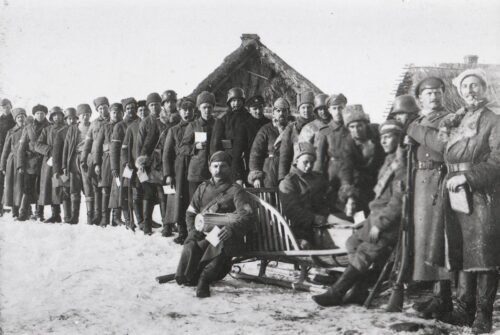
The Soviet army was successfully repelled with the help of 4000 Finish volunteers and a cargo of weapons delivered by the British Royal navy. Contrary to the pessimist premonitions, Estonians held their ground and in 1920 forced the Bolsheviks to sign a peace treaty, paid for by the lives of more than 2.300 men. More than 13.000 were wounded. Estonia was finally independent. Tallinn would serve as the capital of the new Estonian Republic and Toompea Castle as the seat of the Estonian government.
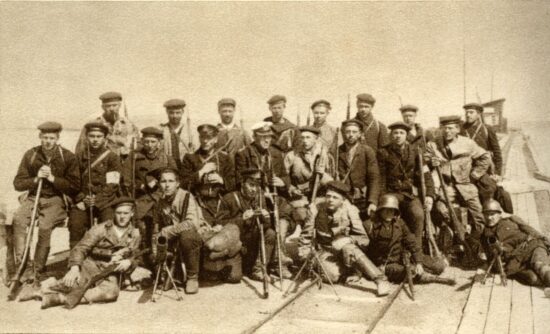
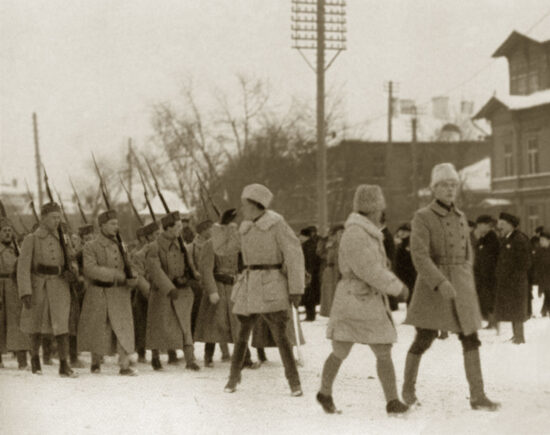
What was evident in the years between the two great wars in Tallinn was an intensive investment on the capital’s railroad network and on its cultural and educational foundations. The National Library of Estonia, the Tallinn College of Engineering (later University of Technology), the Higher Music School (later Estonian Academy of Music), the Art Museum of Estonia, the Estonian Symphony Orchestra were all established in the interwar period.
In 1940 the liberal constitution of the young Estonian democracy was abolished and Tallinn was annexed by the Soviet Union along with the rest of the country. Soviet repression and mass deportations to Siberia were followed by a Nazi invasion in July 1941, which forced the Soviets to evacuate Tallinn. Most Estonians greeted the Germans with relatively open arms, many of them invoking of their German origin. Soon the German Security Police got to work and the shy hope of any autonomy was shattered. By early 1942 the remaining 1000 Estonians of Jewish origin were killed and 8.000 more followed their fate based on accusations of cooperation with the Soviet regime. A total of more than 45.000 war prisoners held in Estonia perished due to exhaustion and disease.
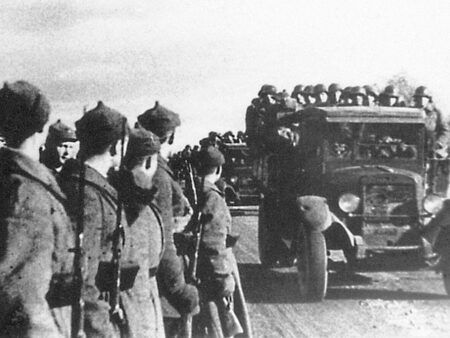
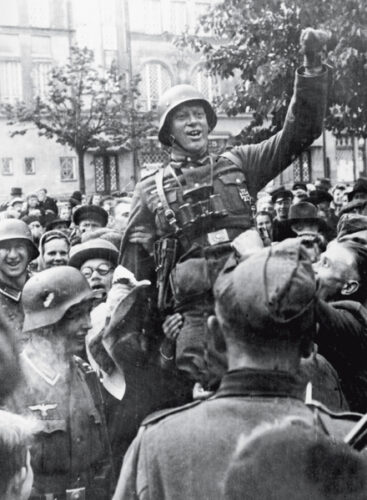
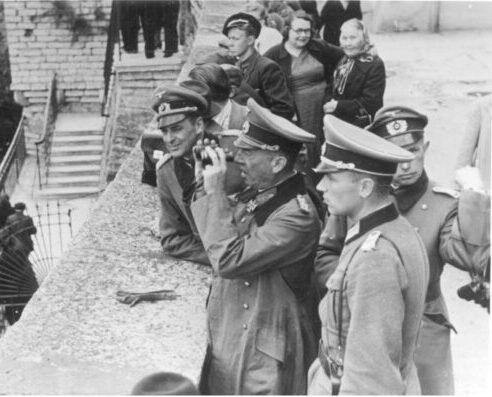
Tallinn was bombed on several occasions by the Soviets with the heaviest air raids happening in 1944 when more than 800 residents lost their lives and about 20,000 of them lost their homes. By September 1944 Estonia had been abandoned by the German troops opening the door for a new round of upheaval. The Soviets rushed in to fill the gap. More self-exiles, more deportations, more repression was in store. The ones who were left behind were living in a state of terror. The Soviet iron curtain was drawn and Tallinn found itself behind it.
The iron grip of Kremlin would last until 1991. During the years of the Soviet rule, Tallinn grew significantly in terms of population, from 127,000 towards the end of WW2 to 410,000 in 1977, to 478,000 in 1989. It also grew industrially despite the fact that most of the factories were linked with the Soviet military needs. There were some examples of out-of-the-ordinary Soviet architecture that were added in Tallinn’s cityscape like the Okta Centrum, the Linnahall and that of the National Library, that went the extra mile within the general lines of Soviet aesthetics.
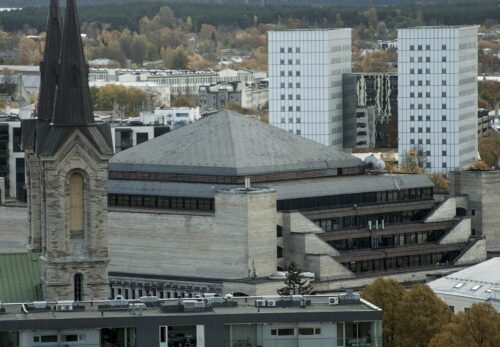

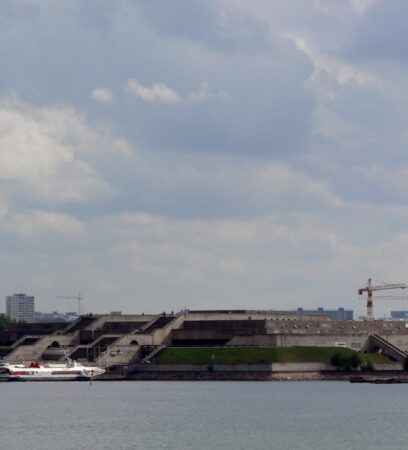
The first major cracks of the Soviet regime started to become evident after the introduction of the Perestroika reformation in 1987. In June 1988 in the Old Town festival some of the participants started singing old patriotic songs, a first shy sign of a bolder expression by the people. A few months later in the so called Baltic Way (or Chain of Freedom), a human chain of about two million people joined their hands from Tallinn to Riga and Vilnius demonstrating their desire for independence. Their dream would become reality in 1991. On the 20th of August, Estonia declared its independence. Three years later the last units of the Russian army left Estonia for ever.
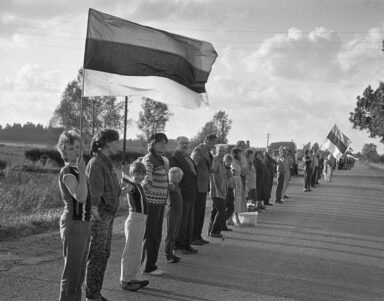
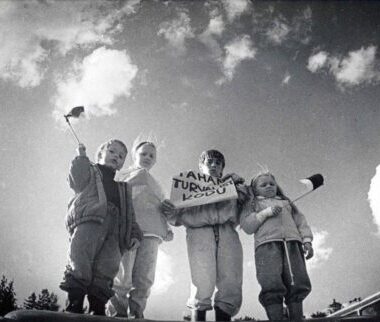
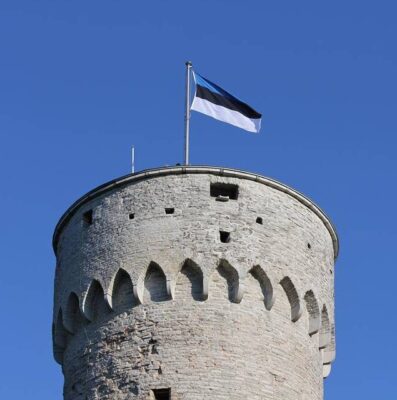
Although Tallinn’s population has remained more or less steady since the 90’s to a little bit more than 400,000 residents, the capital’s economy accounts to more than half of Estonia’s total GDP. The country is at the forefront of liberalism in the European Union (a member since 2004) and Tallinn is of course the country’s power-house. Estonia is famed nowadays for its business friendly environment and software economy and a large part of it is centered in Tallinn’s Tornimäe business district, an area packed with cutting edge skyscrapers and modern buildings.
On the other hand Tallinn’s Old town is a UNESCO World Heritage Site considered as an outstanding example of international secular-ecclesiastical culture resulting from the interchange of Cistercians, Dominicans, the Teutonic Order and the traditions of the Hanseatic League. The old town preserves to a remarkable extent the medieval urban structure of building plots, streets and squares, set out in the 13th century, as well as medieval urban fabric. The radial street network is well endowed with buildings from the 14th-16th centuries. The town defences have been preserved over large sections at their original length and height, rising to over 15m in places.In addition to architectural continuity, Old Town has retained its traditional use as a living city, hosting domestic, commercial and religious functions, and retaining the upper town as the administrative centre of the country. (More)
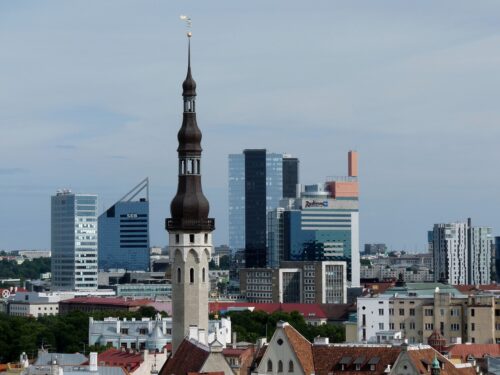
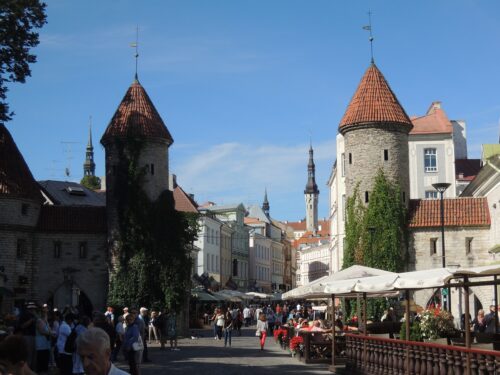
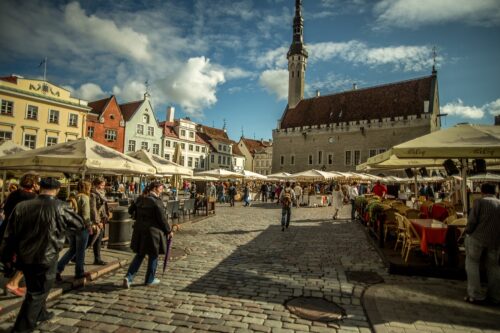

The Estonian capital is the mirror image of the increasing self-confidence of the Estonian nation. The threads that connect its past and present intertwine in Tallinn’s Old Town and economic districts. The rainy season in Estonia is to a large extent a whole year deal so its better for visitors to pack for all seasons, even in the height of summer. Late spring and early autumn, is probably the greatest time to visit when the weather is still warm and Estonia’s countryside is awash with colour. A safe choice despite the cold is always Christmas time, with Tallinn dressed in beautiful lights and perfumed by the scent of traditional open-air markets and mulled wine.
